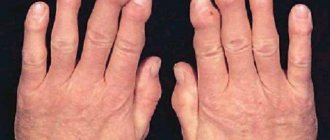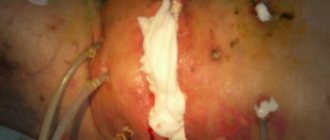The word “paranoia” in psychiatry, and in everyday life in general, has been known and used for quite some time. According to its original meaning, this concept implied any form of mental perversion, however, since the eighties, the word “paranoia” was assigned a new meaning, which remains to this day.
Paranoia these days
is a unique form of psychosis that combines illogical and even delusional ideas characteristic of mental disorders and the preservation of normal mental abilities, emotional background and thinking processes.
Symptoms of paranoia
Once they arise, illogical thoughts can be retained in the subconscious, from where it is almost impossible to eliminate them with any beliefs. In addition, they have the ability to reproduce both through logical development and through the emergence of new ideas and thoughts that appear similar to the original ones. Most of the content of their thoughts and delusions is associated with deceptions of the senses, most often with hallucinations. In most cases, the obsessive thought of paranoid people is persecution mania.
.
This is especially true for the initial stage of the disease. In later stages, megalomania
.
Paranoid personality disorder - symptoms and treatment
The need to systematize variants of the disorder more often leads to classification according to the plot of overvalued ideas: jealous people, inventors, querulants, fanatics, etc. However, this approach is quite superficial and does not allow us to understand the essence of the intrapsychic mechanisms of ongoing personal events.
At the moment, it is clinically more justified to distinguish two polar variants of paranoid RL:
- expansive shape;
- sensitive form.[9]
The expansive variant includes pathological jealous people, litigators, truth-seekers, and reformers. Being prone to lies from an early age, they are vindictive, “do not see the beam in their own eye”, they can be characterized as slanderers and complainers. They are smug and confident that their understanding of their specialty is perfect. Not wanting to obey, they strive to occupy a higher position, fighting exclusively with personal enemies. By choosing science as their activity, they pursue the same goal - to humiliate their enemies. The whole life of such individuals is a similar struggle. They are sthenic (efficient, resistant to stress) and exalted (in an inspired state). The pace of their thoughts is accelerated and their mood is elevated.
Between the exalted and sensitive poles, there are many transitional forms , for example, the “sectarians” described above by K. Schneider, who are closer to the psychopaths of the schizoid circle.[1]
The sensitive pole of paranoid disorder was first described by E. Kretschmer, and A.E. Lichko identified it as a separate type of psychopathy. Outside of decompensation (exacerbation) of the disorder, sensitive paranoids are to some extent similar to sensitive schizoids. Their characteristic feature is the combination of asthenic personality traits (fatigue and mood instability), sensitive (increased sensitivity, impressionability) and sthenic ones. They are characterized by a lack of affective discharge, which leads to stagnant affect. Therefore, they react deeply and lastingly to various kinds of conflicts.
People of the sensitive pole are rather suspicious, self-critical, timid, shy, and irritable. The big difference is the accentuated feeling of failure in the professional sphere and everyday issues. At the same time, the standards against which they evaluate themselves are set by them independently. The content of their mental life is characterized by complexes of shameful ethical insufficiency.
During the period of decompensation, the world of a sensitive paranoid seems to him to be colored by that same lingering affect. The starting points of experience are not only sexuality complexes (such as masturbation or gerontophilia), but also dissatisfaction with work (slowdown in career growth) and the family situation.[9]
During the course of the disease, two main phases :
- compensation - when the features are relatively smoothed out;
- decompensation with aggravation of interpersonal conflicts and delinquent behavior (often occurs during the period of puberty crisis - adolescence).
Stages of paranoia
Paranoia is a chronic disease in which three stages are clearly monitored:
First stage
- Preparatory stage - delirium does not yet manifest itself in the words and actions of the patient and at this stage it is almost impossible to diagnose the disease. Paranoia is revealed only in the future, and at the next stages it becomes obvious that delusional thoughts were nurtured in the patient’s mind for months - they simply did not affect his behavior and other external manifestations. Continuing, at first glance, their ordinary lives (“remaining themselves”), paranoid patients become increasingly distrustful and suspicious. They begin to notice that they are being treated “somehow differently,” their lives and dignity are in danger, they are being pursued by unknown (often fictitious) persons, and so on. Patients begin to take self-defense measures; every day they become more and more hostile towards potential “enemies” - for example, police officers, social workers, and often just all people indiscriminately.
Second stage
- The second stage of paranoia can last for many years. It is associated with the active development of delusional ideas and thoughts that arose in the first stage. This stage is the main one. The patient develops an incredibly complex picture of the world, based on delusional thoughts and hallucinations. In it, most often, the paranoid person is surrounded by all sorts of dangers - he is being watched by intelligence agents, their phones are tapped and even their thoughts are read. They see hostile faces and unpleasant scenes, they hear voices and so on. Words and thoughts are imposed on them that can compromise them and in general, in their opinion, this whole world was created to kill them, drive them to despair, suicide, and so on. Having succumbed to these ideas, patients become depressed and nervous, they are very easily angered, they become lethargic and apathetic, losing all interest in everything except their persecution mania
. They are always careful in communication so as not to inadvertently compromise themselves. Noticing that they are considered crazy, they try in every possible way to hide their worldview and isolate themselves even more from society. However, due to fear and anger, a paranoid person is capable of losing self-control and trying to harm potential perpetrators of the conspiracy, up to and including public insults and attempted murder.
Third stage
- Treatment of paranoia
The main problem in the treatment of paranoia is that patients themselves do not consider themselves sick, and therefore do not consult a specialist for a long time. In addition, paranoid people exhibit symptoms noticeable to others quite late, since the apparent adequacy persists for a long time. However, no effective method of treating paranoia has yet been developed. One possible method is chemotherapy. However, it is worth noting that the main problem in the treatment of paranoia remains the patient’s social adaptation and restoration of his trust in people.
Provoking factors
Scientists have not yet identified the exact causes of the disease. But experts have identified a number of factors that significantly increase the risk of developing pathology. These include:
- heredity;
- protein metabolism disorder;
- psychological trauma that the patient received in childhood;
- neurological and mental diseases;
- long-term depression;
- neuroses;
- prolonged isolation from society;
- difficult life situations;
- long-term use of medications, drugs or alcohol consumption.
The risk group includes patients suffering from Alzheimer's and Parkinson's diseases.
Many scientists believe that regular consumption of large quantities of strong coffee can provoke the development of paranoid syndrome. The drink negatively affects the quality of sleep, insomnia develops, against the background of which the body is constantly in a depressed state.
Glossary of terms
In this section we have collected all the terms that you might encounter in this article. Gradually, we will collect from these explanations a real dictionary of a narcologist-psychiatrist. If some concepts remain unclear to you, leave your comments under the articles on our site. We will definitely help you figure it out.
Delirium (delusional syndrome)
– a mental disorder that is characterized by erroneous, completely uncontrollable judgments in the patient. These judgments are capable of being formed without any explanation, reason or appropriate conditions for this. This syndrome manifests itself in patients with schizophrenia, as well as in people suffering from diseases of the central nervous system of a vascular and atrophic nature. In addition, patients diagnosed with psychosis are also susceptible to the development of delusional syndrome.
Paranoia
is a unique form of psychosis that combines illogical and even delusional ideas characteristic of mental disorders and the preservation of normal mental abilities, emotional background and thinking processes.
Psychoses
- These are short-term, reversible mental disorders that arise in a person as a result of mental trauma. They are characterized by the severity, severity and depth of the mental harm caused. Productive and negative symptoms arise. German psychologist and psychiatrist Karl Jaspers formulated the concept that reactive psychoses occur due to a conflict between the individual and an intolerable reality. This definition was included in textbooks and, in many ways, became classic.
History of diagnosis
Paranoid syndrome began to be studied in more detail after the disease was identified as an independent disease. In 1915, a number of scientists proved that pathology is accompanied by interpretive delusions and that often all the patient’s thoughts are systematized.
Later, already in 1934, in the works of V.M. Morozov, it was proven that patients develop persistent delusional thoughts over time. All conclusions have a special system and patients are confident that they are right.
Also in the works of A.B. Smulevich and M.G. Shchirina in 1972 found that in some cases the disease develops like an epiphany, acutely and suddenly.
Classification according to ICD-10
In the international classification of diseases intended for use in Russia, delusional disorders have code F 22.01. It also includes paranoid development.
Also, other delusional personality disorders, including the querulant form, belong to the section coded F28.8 and F28.88. In the official ICD-10, paranoia is not classified as a separate section and corresponds to delusional disorder, code F22.0.
With a mild course of the pathology, they speak of paranoid disorder, the code of which, in accordance with ICD-10, is F60.0. In this case, the term “paranoid” means something similar to paranoia.
In addition, there is another form of personality disorder similar to paranoia. Paranoid schizophrenia. In the ICD, adapted for use in Russia, it belongs to the heading F22.03 - paranoid schizophrenia.
Development of pathology
Paranoid syndrome develops in two stages. The first is characterized by the secrecy of delusional ideas in the patient’s behavior and actions. But the character begins to gradually change, suspicion appears. The patient adjusts his life to his fantasies, taking them for reality.
The second stage is characterized by an improvement in delusional deviations. The patient suffers from auditory hallucinations. The paranoid constantly imagines surveillance, alien voices that call him and impose their truths.
Often such people turn to investigative authorities for help due to wiretapping. The patient begins to be overcome by fear, panic, and anxiety. He feels like he is surrounded by a secret conspiracy. He talks about his plans with caution.
Only a doctor can stop the development of mental disorders, psychosis, depression and constant horror.
Clinical picture
Signs of paranoia can manifest themselves in varying degrees of severity, so the main symptoms of paranoid syndrome include:
- decreased mental activity;
- inability to adequately perceive criticism;
- suspicion;
- hostility;
- hallucinations, most often auditory;
- megalomania;
- touchiness;
- jealousy is constant and unfounded;
- tendency to pass off fantasies as reality.
In addition, there is constant anxiety and fear. Patients suffer from depression and prolonged psychosis. Often they begin to file complaints to various authorities against people whom they consider their enemies and involved in the conspiracy.
Character of the current
In medicine, there are several types of paranoia, which differ in signs and causes, these include:
- Alcoholic . Occurs due to prolonged use of alcoholic beverages. One of the signs is pathological jealousy. The mania of persecution also manifests itself.
- Involutionary . Characterized by delusions of persecution, grandeur, and jealousy. Occurs at the age of 45-60 years.
- Megalomaniac . Systematized delusions of grandeur. Often the patient feels like a pioneer or reformer.
- Delirium of jealousy . The patient always thinks that his spouse is unfaithful to him.
- Religious . Delusional ideas of religious content.
- Persecute . Systematized ideas of persecution.
- Erotic . It develops more often in women 40-50 years old. Characterized by a predominance of erotic delirium.
- Senile . Occurs in old age.
- Spicy . Manifested by sudden, figurative delusions of grandeur, relationships, or persecution.
- expansive paranoia is also distinguished Images of delirium also appear suddenly. Most often they are of a religious nature.










